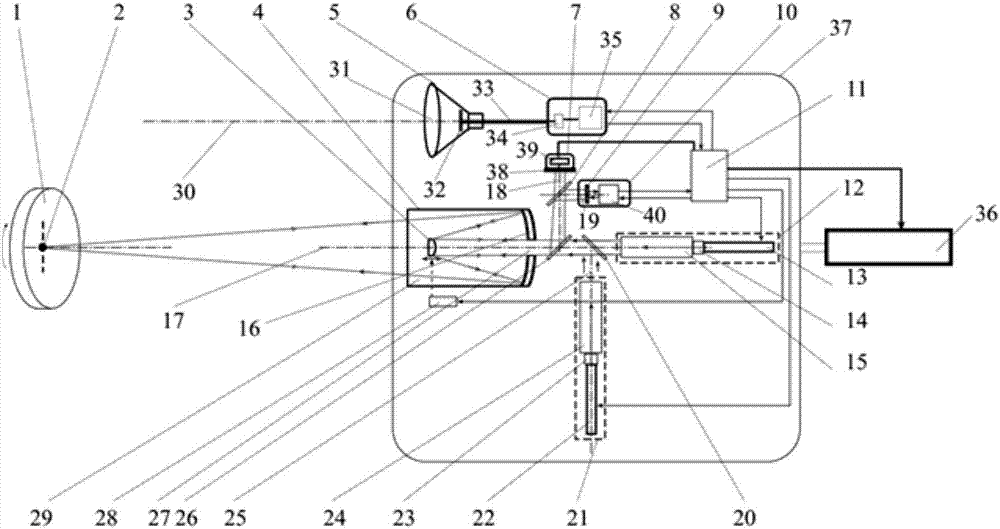Self-adaptive laser derotation method for space debris
A space debris and self-adaptive technology, which is applied in the field of low-earth orbit debris racemization and target racemization, can solve the problems such as the LID racemization system and method that have not yet been introduced, and achieves the effect of improving debris capture capability and fast debris racemization.
- Summary
- Abstract
- Description
- Claims
- Application Information
AI Technical Summary
Problems solved by technology
Method used
Image
Examples
Embodiment Construction
[0039] The specific embodiment of the present invention is as figure 1 shown.
[0040] The self-adaptive laser derotation system proposed by the present invention is composed of an electric turntable 36 and a fuselage main body 37. The fuselage main body 37 contains an image tracking subsystem 5, a tracking analysis subsystem 6, a distance measuring and speed measuring laser emitting subsystem 21, an echo Receiving subsystem 7, LID subsystem 12, LID effect monitoring and analysis subsystem 10, adaptive focusing subsystem 29 and main control analyzer 11;
[0041] Among them, the electric turntable 36 can accept the instruction of the main control analyzer 11 to drive the main body 37 of the fuselage to rotate at any angle in three dimensions;
[0042] The image tracking subsystem 5 is made up of a wide-angle lens 31 and an imaging detector 32; the tracking analysis subsystem 6 is made up of an imaging controller 34 and an imaging analyzer 35; the imaging controller 34 communic...
PUM
 Login to View More
Login to View More Abstract
Description
Claims
Application Information
 Login to View More
Login to View More - R&D
- Intellectual Property
- Life Sciences
- Materials
- Tech Scout
- Unparalleled Data Quality
- Higher Quality Content
- 60% Fewer Hallucinations
Browse by: Latest US Patents, China's latest patents, Technical Efficacy Thesaurus, Application Domain, Technology Topic, Popular Technical Reports.
© 2025 PatSnap. All rights reserved.Legal|Privacy policy|Modern Slavery Act Transparency Statement|Sitemap|About US| Contact US: help@patsnap.com

